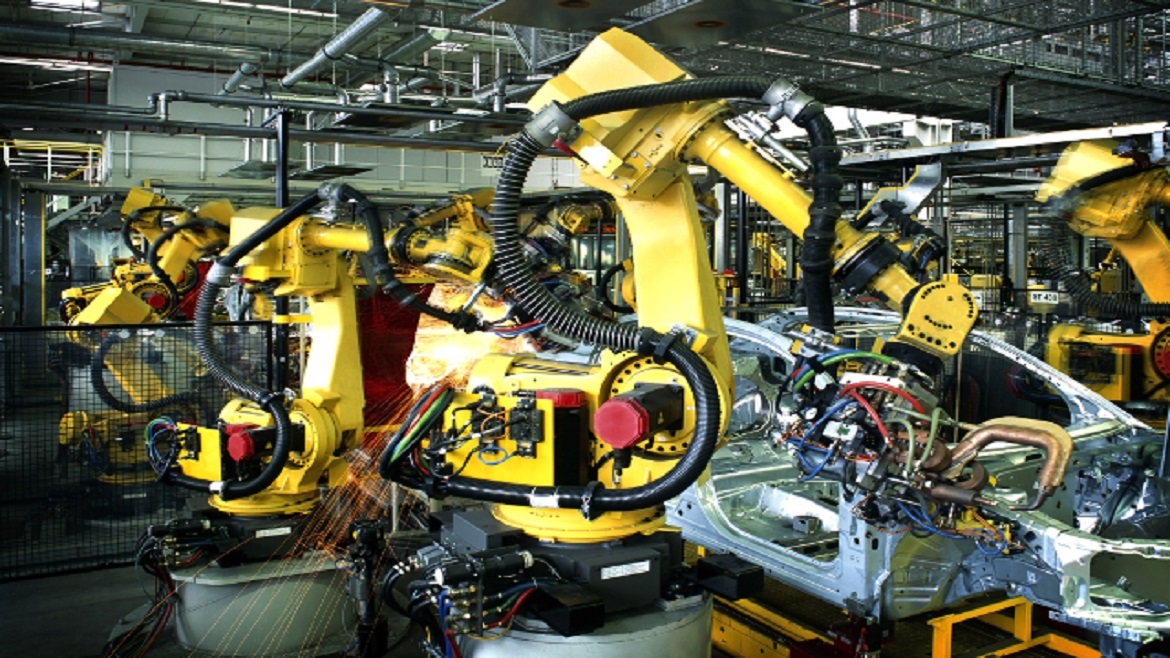
The pace of innovation in automated manufacturing is such that some companies already operate ‘lights-out’ factories, where no human labour is involved at all. As robots take on increasingly sophisticated physical and cognitive tasks, could we one day see entirely automated companies?
Full automation of the factory floor was seen as inevitable in 1980s Japan, as manufacturers swapped low-skilled labour for increasingly sophisticated robots. But the revolution was slower than expected, and globalisation allowed manufacturers to access human employees, whose dexterity and flexibility trumped expensive robots, at a low cost in developing countries.
Technological improvements and rising wages, particularly in China, mean this is now changing. Philips, the electronics company, runs a lights-out operation to produce electric razors. Camera-maker Canon aims to remove humans from its factories within the year. FANUC, the Japanese robotics firm, has had robots building its robots unsupervised, for stretches as long as a month at a time, since 2001.
Electronics production, where assembly is repetitive and often too intricate for human hands, is amongst the best suited to full automation. The world’s largest electronics manufacturer, Taiwan’s Foxconn, is increasingly robot-run: according to the CEO, by 2018 the company will automate around 70 percent of its assembly line work.
Foxconn’s factories are not yet fully automated, since their robots lack two key human qualities: they don’t have the dexterity of human hands for final assembly, nor the judgment required for quality control checks. However, the next generation of robots may well be able to meet both these needs.
It is not just physical labour that is being automated. Increasingly sophisticated cognitive tasks are now being performed by software, and many professional roles are at risk of computerisation. It is not hard to imagine this trend extending until many organisations are almost entirely automated.
Some companies already seem to be moving in that direction. Online retailer Amazon.com, for example, replaced many workers at its distribution-centre workers after acquiring Kiva Systems, a company that builds mobile robots that navigate the warehouse fulfilling autonomously, more efficiently and accurately than humans on forklift trucks.
The growing sophistication of robotics and artificial intelligence promises to continue a gradual reduction in staffing levels that has been underway in businesses for decades. Fifty years ago, the world’s then most profitable company, General Motors, made US$7.6 million (adjusted for inflation) and employed 600,000 people. Today’s most profitable company, Apple, generates more than ten times as much in profits—and employs nearly ten times fewer people.
For businesses and their investors, this sharp rise in productivity is good news. The hope is that the human beings whose jobs are displaced by automated systems will go on to find better, more valuable roles. But this is by no means a foregone conclusion.
Could your company run without any human employees? Join the discussion on the Future Realities LinkedIn group, sponsored by Dassault Systèmes.
The views and opinions expressed in this article are those of the authors and do not necessarily reflect the views of The Economist Intelligence Unit Limited (EIU) or any other member of The Economist Group. The Economist Group (including the EIU) cannot accept any responsibility or liability for reliance by any person on this article or any of the information, opinions or conclusions set out in the article.




